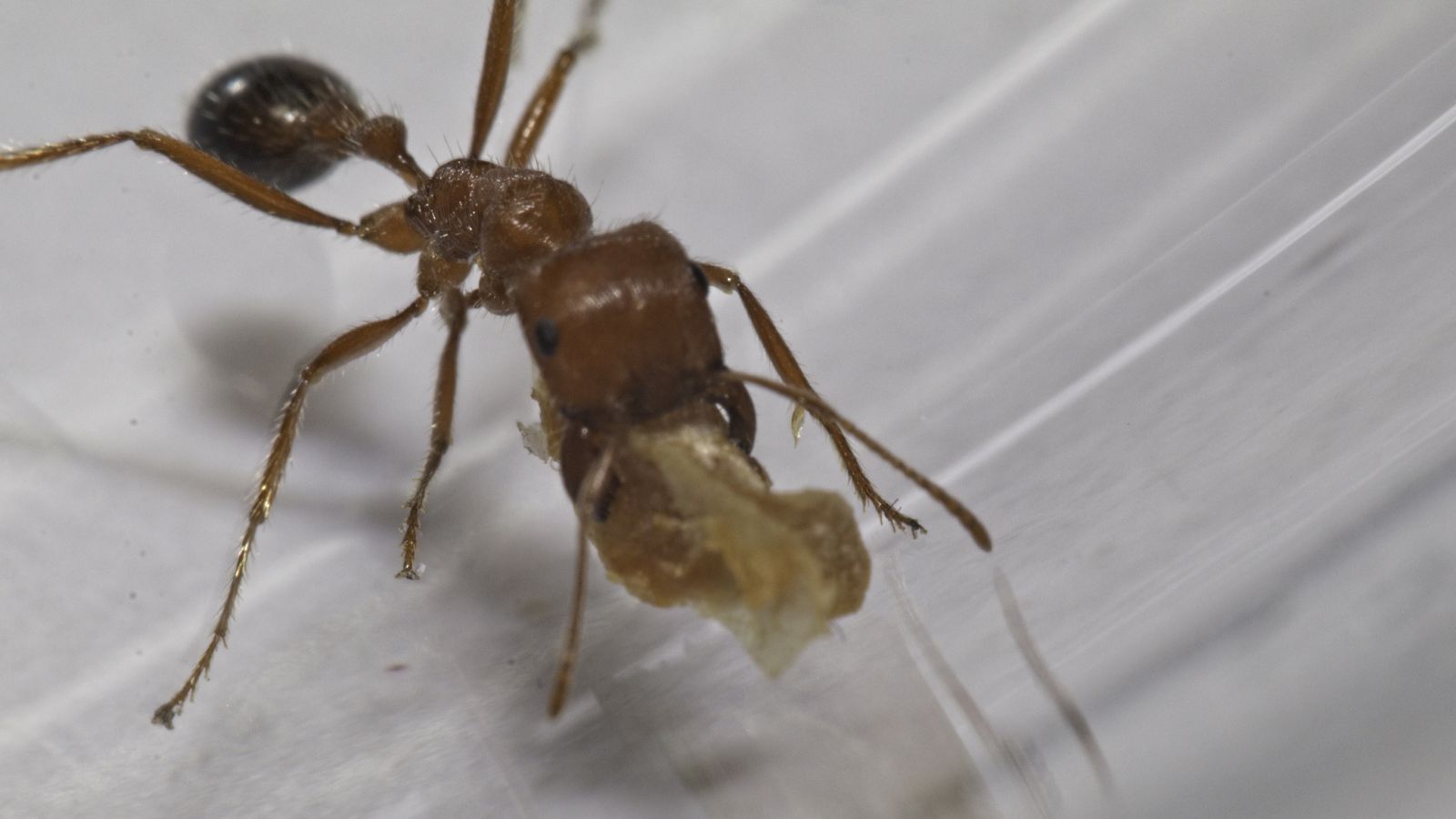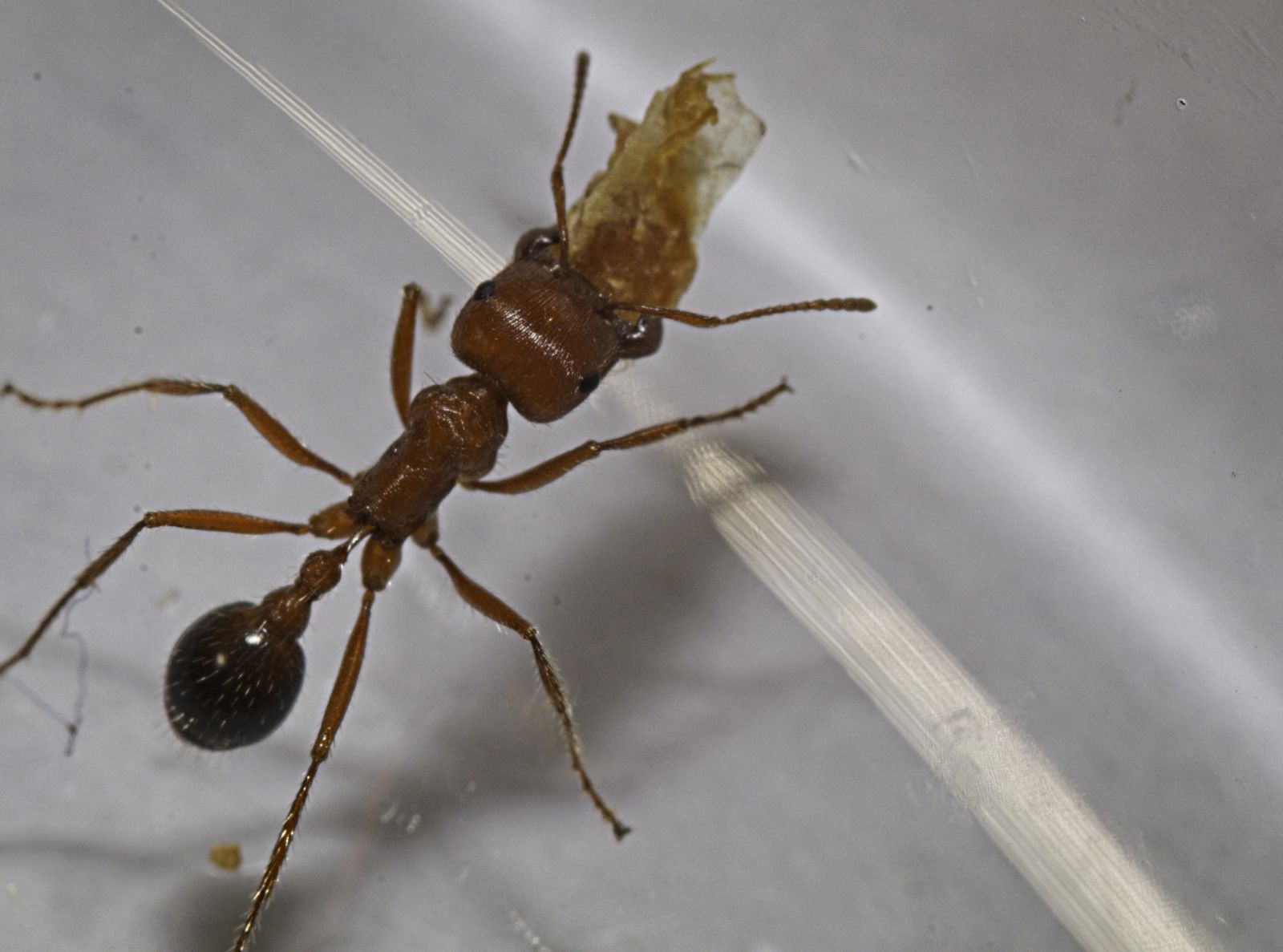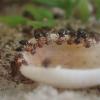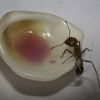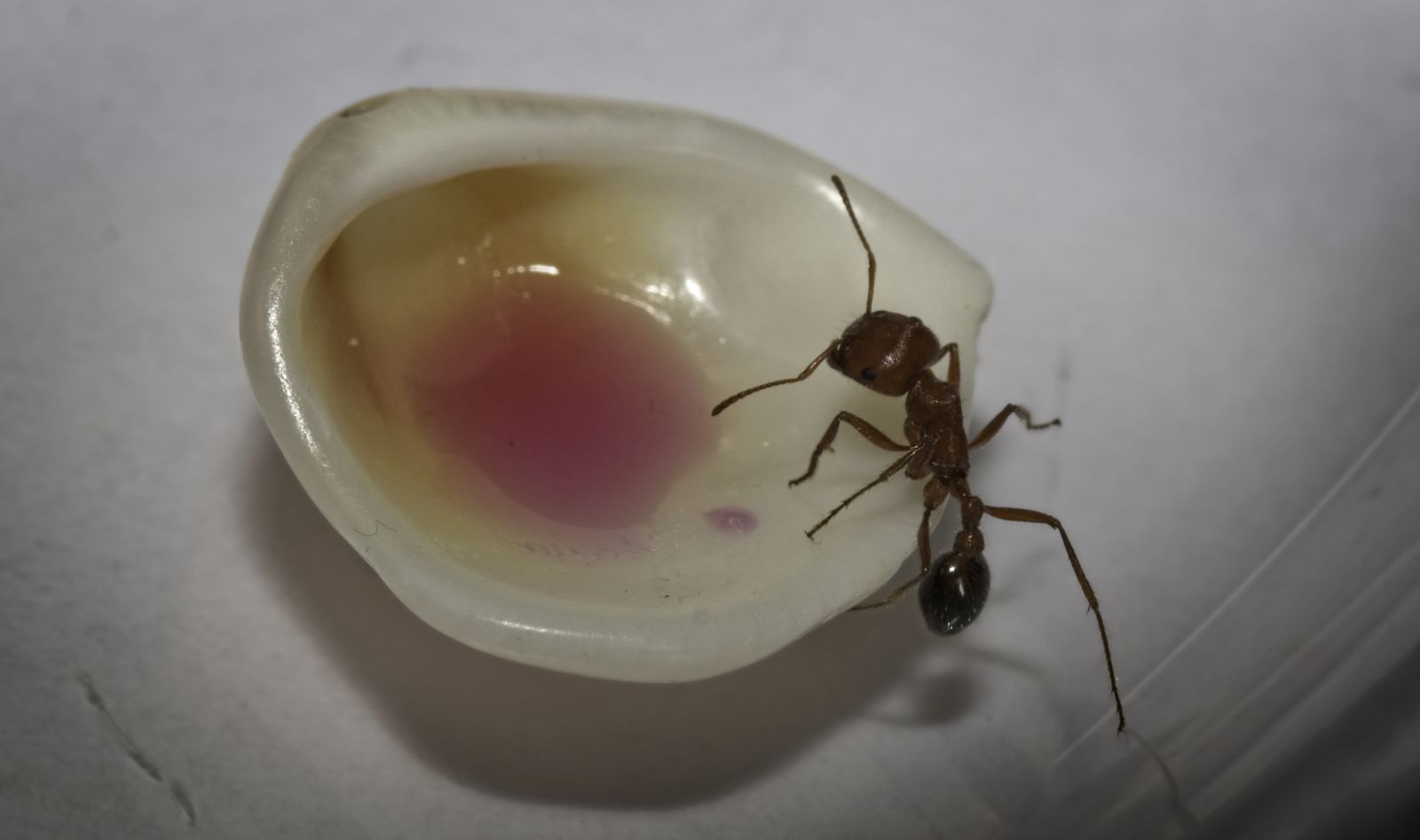1. Location (on a map) of collection: Tucson, AZ
2. Date of collection: November 17
3. Habitat of collection: desert (Sonoran) in a bare dirt/sand area not far from a dry riverbed
4. Length (from head to gaster): 3/8" estimated (the shell filled with pink nectar is 1/2" diameter)
5. Color, hue, pattern and texture: red, with black gaster
6. Distinguishing characteristics: bi-colored, non shiny up to gaster, small, wide-set eyes
7. Distinguishing behavior: aggressive & determined, not mellow; not interested in fruit flies or prickly pear nectar, but picked up a small piece of oatmeal and wouldn't give it up
8. Nest description: couldn't find it
9. Nuptial flight time and date: NA
Looks like a pogonomyrmex bicolor but the p. californicus is kind of similar looking.
